Kennedy Lab - Spring 2024
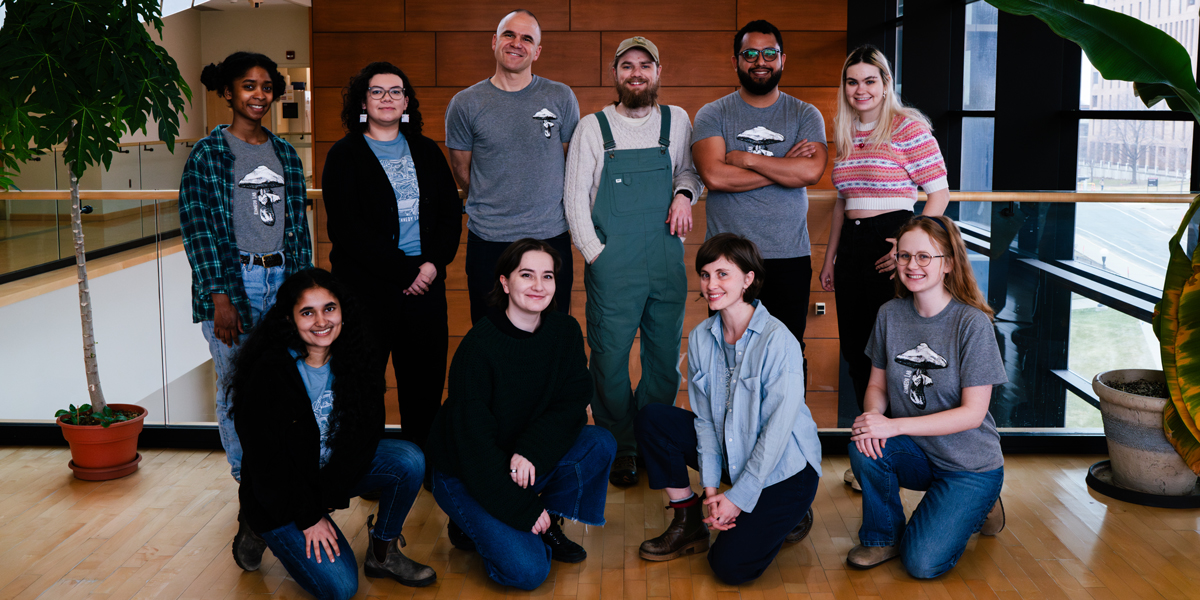
Left to right (top row): Nishia Nieves, Anahi Cantoran, Peter Kennedy, Lang DeLancey, Eduardo Pérez Pazos, Oliv Yesker
Left to right (bottom row): Achala Narayanan, Talia Michaud, Katie Beidler, Briana Beatty.
Kennedy Lab - Spring 2021
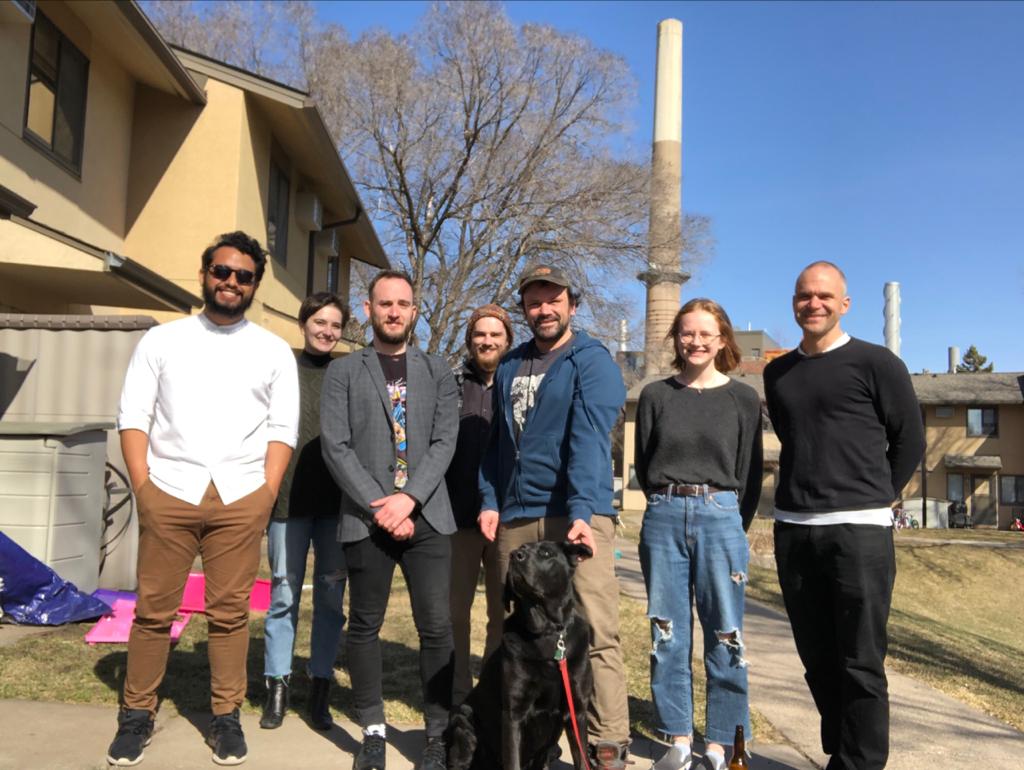
Left to right: Eduardo Pérez-Pazos, Talia Michaud, François Maillard, Lang DeLancey, Bear, Craig See, Briana Beatty, Peter Kennedy
Kennedy Lab - Spring 2019 (including affiliate members)
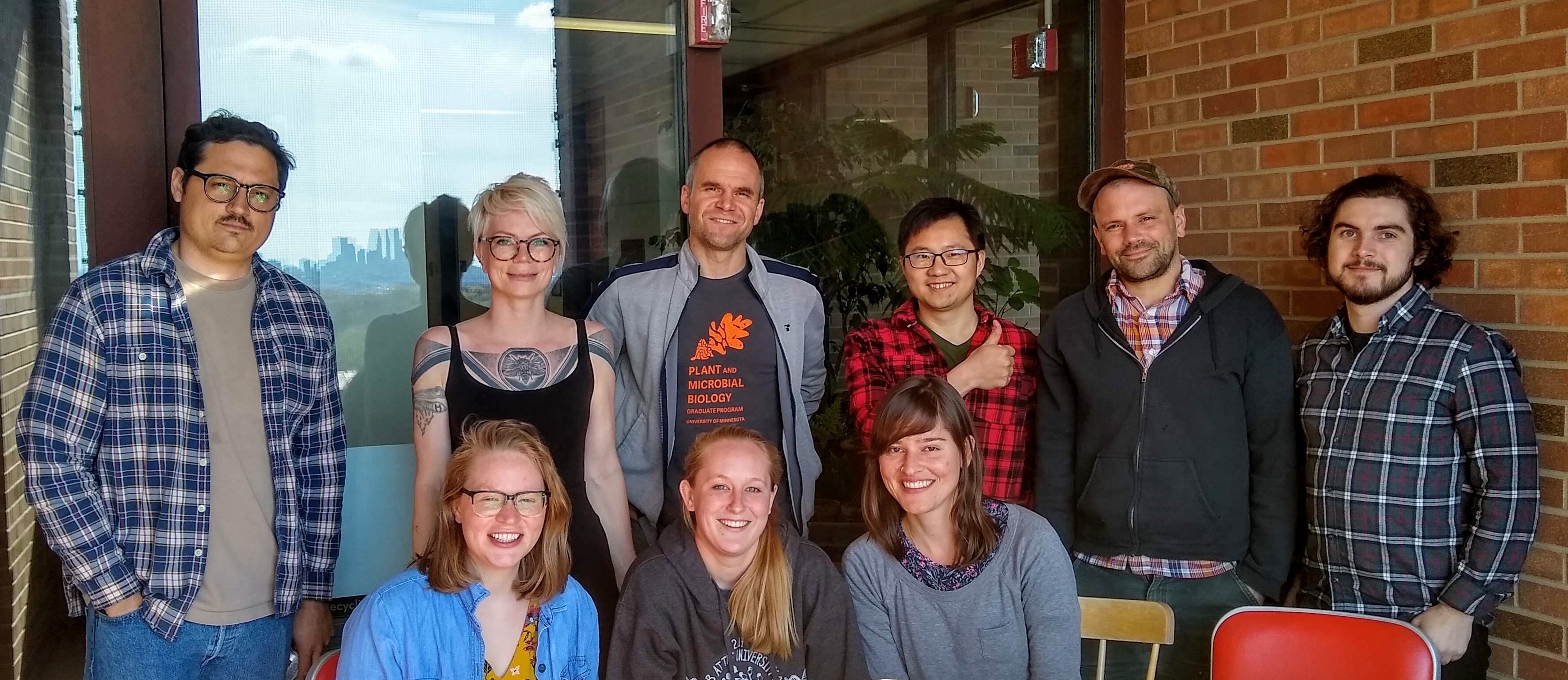
Left to right (top row): Chris Fernandez, Lotus Lofgren, Peter Kennedy, Yue-Hua Hu, Craig See, Joe Gagne
Left to right (bottom row): Amanda Certano, Erin Andrews, Laura Toro-Gonzalez
Kennedy Lab - Fall 2016
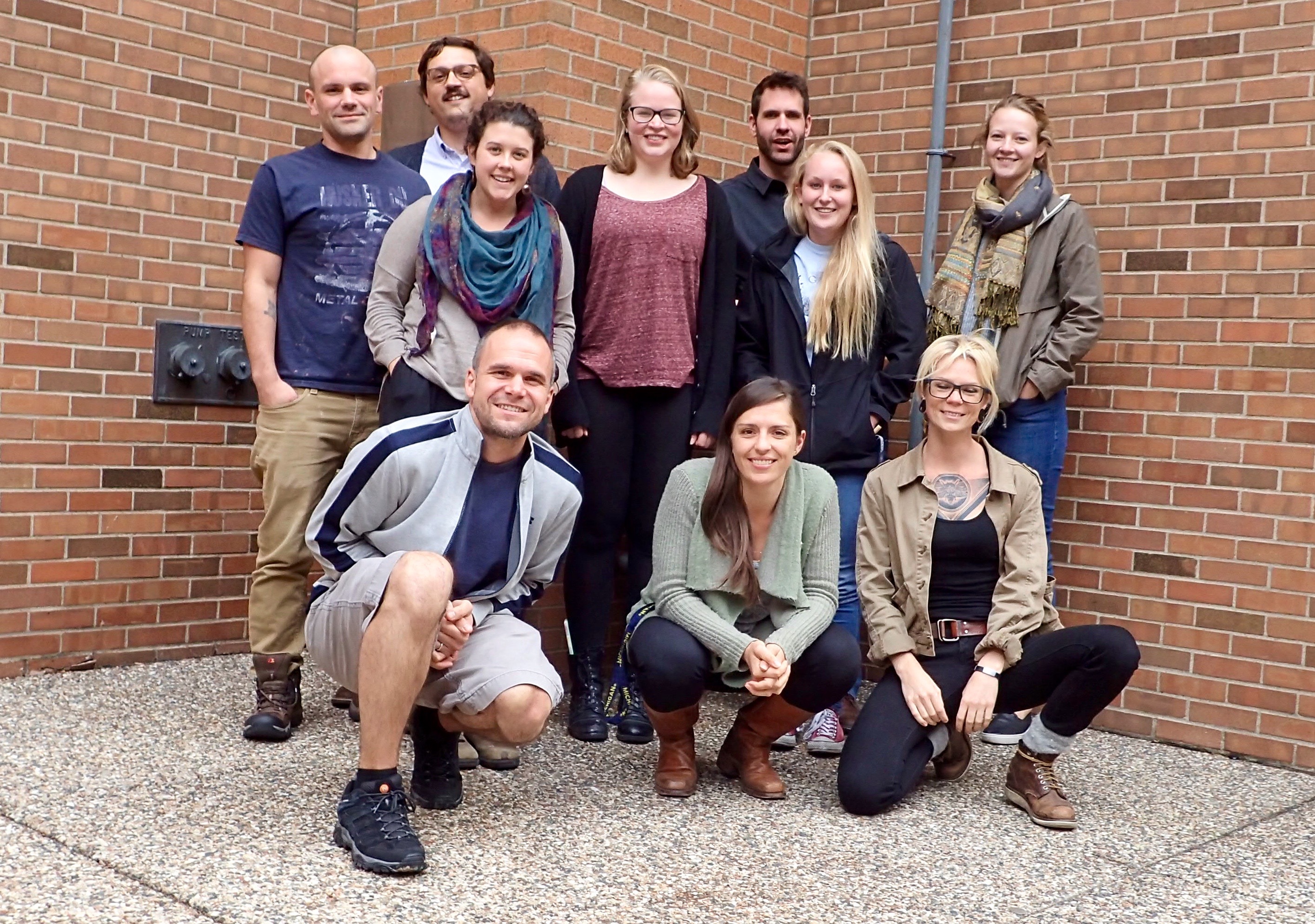
Left to right (top row): Craig See, Chris Fernandez, Caroline Daws, Amanda Certano, Luke McCormack, Erin Andrews, Eva Carlson
Left to right (bottom row): Peter Kennedy, Lauren Cline, Lotus Lofgren
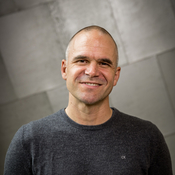
Peter Kennedy
Professor, Department of Plant & Microbial Biology
1479 Gortner Ave.
St. Paul, MN 55108
Office: 810 Biological Sciences - Phone: 612-624-8519 - Email: kennedyp@umn.edu
Graduate Students & Post-docs
(in alphabetical order by last name)
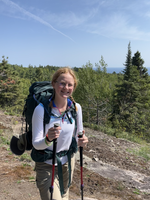
Briana Beatty, Graduate Student
Office: 810 BioSci - Email: beatt193@umn.edu
Briana is a UMN PMB PhD student who grew up here in Minnesota. She is interested in forest soils and the incredible diversity of organisms that live within it. She is currently studying the microbial communities that break down fungal “necromass”, specifically how bacterial and fungal decomposers interact and how environmental factors drive those interactions. Briana enjoys studying microbes in the lab almost as much as in the field, where her work mostly consists of digging holes. She has camped at prim near every campground in the state and enjoys nordic skiing and figure skating in the winter. Most importantly, her favorite things in life are Culver’s and her cat Otto.
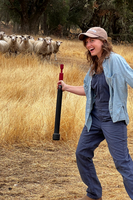
Katie Beidler, Post-Doc
Office: 808 BioSci - Email: beidl006@umn.edu
I am an ecologist who explores the hidden world of roots and microbial communities to better understand how energy (carbon) and nutrients cycle through soils. My work in the Kennedy Lab investigates how the carbon contained in dead fungal bodies (fungal necromass) is stored vs. lost in grassland and forest ecosystems. I use a mix of field and lab-based approaches including isotopic tracing. When I am not in the lab, I am usually chasing my 11-year-old dog or 1.5-year-old baby around. I am originally from Charleston SC and my primary hobby is seafood.
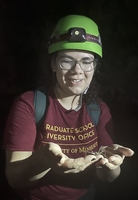
Anahi Cantoran, Graduate Student
Office: 804 BioSci - Email: canto061@umn.edu
My research interest is understanding microbial community dynamics and their responses to environmental stressors. I got my A.A. at Minneapolis College and B.S. in Biology at Augsburg University where I developed an interest in microbial ecology and active learning in biology education. In the Kennedy Lab, I am working on understanding how dominant microbial taxa decomposing fungal necromass respond to warming and water availability and the genetic mechanisms behind how these dominant taxa decompose fungal necromass. Outside of the lab, you will find me practicing one of my many art activities (drawing, painting, embroidery, ceramics, felting, you name it), picking up worms, or tending to plants!
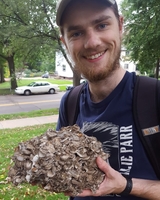
Lang DeLancey, Graduate Student (co-advised with Sarah Hobbie)
Office: 510 Ecology - Email: ldelance@umn.edu
My research focuses on how fungi, both dead and alive, influence the cycling and retention of carbon and nitrogen in soils. In particular, I am interested in how interactions between ectomycorrhizal and saprotrophic fungi influence soil carbon storage and persistence, either through changes to decomposition or through the generation of their own necromass. I am also interested in how human disturbances, such as nitrogen pollution, impact these interactions as well as the decomposition of fungal necromass. Outside of my research playing with dirt, I have been a lifelong mushroom forager and enjoy playing and repairing stringed musical instruments.
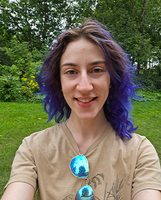
Erica Houser, Graduate Student (co-advised with Rebecca Montgomery)
Office: BioSci 810 - Email: house327@umn.edu
I am a graduate student in the Plant and Microbial Biology department. I am studying how mycorrhizal fungi affect oak regeneration after oak mortality due to the pathogen oak wilt. In my free time, I enjoy drawing plants and fungi, biking, and learning sick skateboard tricks (or just falling a lot).
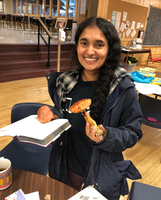
Achala Narayanan, Graduate Student
Office: 804 Biological Sciences - Email: naray262@umn.edu
I enjoy asking ecological questions in microbial systems. During my undergraduate at the University of Massachusetts Amherst, I studied bacterial drought adaptations to soil warming in Kristen DeAngelis’ lab. In the Kennedy lab, I’m studying the functions and interactions of bacterial and fungal cultures isolated from necromass (dead microbial biomass), and more broadly why microbes assemble into diverse communities on necromass. Outside of the lab, I am passionate about tofu, cocker spaniels, and word puzzles.
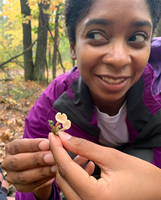
Dyonishia (Nishia) Nieves, Graduate Student
Office: 808 Biological Sciences - Email: nieve041@umn.edu
I am a PhD candidate in the UMN Ecology, Evolution, and Behavior Graduate Program. My primary research interest is to understand how climate change affects below-ground root and fungal communities in boreal and temperate forests. Specifically, I am interested in how soil warming and drying alter the composition, production, and function of tree roots and their associated fungi (especially ectomycorrhizal fungi). I am also interested in how these climate change stressors may alter the phenology of ectomycorrhizal fungal communities, including timing of extramatrical mycelium production. For my dissertation, I perform field research at the long term climate change experiment in northern Minnesota called Boreal Forest Warming at an Ecotone in Danger (B4WarmED).
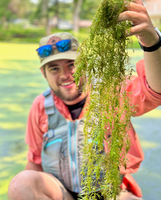
Andrew Ratz, Lab Technician
Office: BioSci 804 - Email: ratz0051@umn.edu
As a recent UMN graduate working as a field and lab technician, I am passionate about biogeochemistry and exploring the impact of the biotic world on the abiotic environment. My specific interests lie in bioweathering, biocorrosion, and how these processes contribute to soil formation but I lov e anything involving the combining of geology and biology. This broad enthusiasm has led me to work in diverse labs, studying everything from lichen, soybeans, and insects to snow algae, aquatic vegetation, and soil microbial communities. I thrive in outdoor environments, enjoying the opportunity to learn anything I can about the natural settings I research. Outside of work, I love running around my hometown of Lino Lakes, cross-stitching Pokémon designs, and delving into lengthy fantasy series that take me ages to finish.
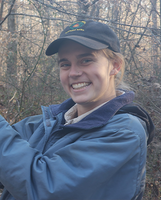
Eva Schwarz, Graduate Student (co-advised with Sarah Hobbie)
Office: BioSci 810 - Email: schw2744@umn.edu
My research interests focus on how multiple ecological factors associated with climate change impact fungal community structure and function. I plan to work at the Cedar Creek Ecosystem Science Reserve in my thesis. I am also interested in how fungi respond to habitat fragmentation as well as how the forb, Crocanthemum bicknellii, may impact grassland plant and fungal community assembly by harboring ectomycorrhizal fungal symbionts important to woody plants. I’m excited about using art to connect people with the natural world, and in my free time I enjoy woodcut printmaking, knitting, and bothering my cat (Tilly!).
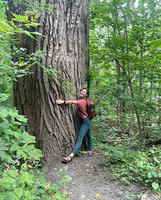
Kathleen Thompson, Post-Doc
Office: BioSci 810 - Email: thom7064@umn.edu
I am a mycologist and ecologist who is fascinated by fungal symbioses, namely mycorrhizal fungi and lichens, and their ecological consequences at both local and global scales. I am also an educator who is passionate about cultivating curiosity and wonder in students and the public alike. My current research in the Kennedy Lab investigates the fungal communities associated with the oak syngameon and how they vary across geographical space and degree of introgression (~ hybridization). Previously, I received a PhD from the University of Wisconsin-Madison studying the contextual dependency of mycorrhizal interactions and their connections to current and future forest structure using a Populus system. Prior to that, I completed a master's at Iowa State University studying lichen diversity and ecology of the Driftless Area, with a focus on rare and extirpated species and lichen conservation. When not thinking about fungi, you can find me tending to my cancer-fighting pup, Phoebe, or sauntering about your local woods.
Undergraduate Researchers
Oliv Yesker joined the lab in June 2023 - she is currently working on multiple lab projects.
Soren Mateny joined the lab in September 2022 - they worked on various lab projects, at Itasca as a ForestGEO field assistant and as a Kennedy lab undergraduate research assistant in summer 2023.
Maddie Klafka joined the lab in October 2023 - she is currently helping with lots of different projects.
Please contact Peter if you are interested in joining our group.
Previous Lab Members
Eduardo Pérez-Pazos
Eduardo was a PhD student in the lab from 2019-2024. He studied both ectomycorrhizal fungal host specificity and the role of priority effects in fungal necromass decomposition. Eduardo is currently a post-doc at Oregon State University in the lab of Posy Busby.
Talia Michaud
Talia was a PhD student in the lab from 2020-2024. She studied on fungal responses to historical environmental change and linking the life cycles of other forest organisms to fungal fruiting. Talia is currently a post-doc at the University of Minnesota in the lab of Brian Aukema.
Klara Peterson
Klara worked in the lab from January 2022 through November 2023 as the joint lab manager for the Kennedy and Hobbie labs.
Catherine Glenn-Stone
Catherine worked in the lab in Summer 2022 as a member of the Itasca ForestGEO plot census team.
Hakeem Hashari
Hakeeem worked in the lab in Summer 2022 doing all kinds of things, mostly related to necromass ecology in collaboration with Eduardo.
Benjamin Tanner
Benjamin worked in the lab in Summer 2021. He worked on the Itasca ForestGEO plot and collected data for his undergraduate senior thesis at Whitman College.
Kelcie Paige-Walther
Kelcie visited the lab in Summer 2021, where she collected data for her undergrad thesis at Columbia University.
Caro Silvola
Caro completed a UROP working with Peter and Talia examining C and N isotopes of MN plant and fungal herbarium collections in Spring 2022.
François Maillard
François was a post-doc on the lab from 2019-2022 and co-advised by Jonathan Schilling. François worked on many projects focused on organic matter decomposition and microbial community dynamics.
Craig See
Craig was the second Ph.D. student in the Kennedy lab and co-advised by Sarah Hobbie. He worked on a wide range of topics united by his broad interests in organic matter decomposition and soil carbon and nitrogen cycling. Craig is now a post-doc in the Schuur lab at Northern Arizona University.
Joe Gagne
Joe Gagne joined the lab in 2018 and worked on a wide range of fungal-related projects through two successful UROP awards. He also carried out a CBS undergraduate honor's thesis examining how competitive ability contributed to the anomalous host associations of Suillus subaureus.
Yue-Hua Hu
Yue-Hua was a visiting scholar in the lab from November 2018 to October 2019. Yue-Hua and Peter collaborated with Zewei Song and other colleagues to study the fungal diversity in a series of large-scale forest dynamics plots in China. Yue-Hua is also a co-PI on the Itasca ForestGeo Project.
Lotus Lofgren
Lotus was the first Ph.D. student in the Kennedy lab. Lotus worked on a variety of topics, bridging her dual passions for fungal ecology and genomics. She is now a post-doc in the Stajich lab at the University of California, Riverside.
Hannah Vanderscheuren
Hannah worked in the lab in summer 2019 as a undergraduate research assistant after completing her first year at UW Madison. She spend time working on various projects, but focused mainly on getting lots of litter bags filled with all kinds of different organic matter types for some new research on the "Gadgil Effect" at Cedar Creek.
Amanda Certano
Amanda worked in the lab twice - first an undergraduate research volunteer in 2015 and then as a lab technician from 2016-2019. She carried out the big Suillus genomics push from Kennedy lab and also worked on many other projects, including her own study of the effect of mycelial morphology of fungal necromass decomposition that was published in 2018. She is now a research scientist at Soil Carbon Co.
Emma Daily
Emma joined the lab for the summer of 2018 from Macalester College to work on the ecology of Frankia bacteria in a collaboration with Dr. Mike Anderson. In addition to lots of PCRs and sequencing, Emma assisted on multiple field visits to Cedar Creek to deploy and recover mycorrhizal necromass.
Lauren Cline
Lauren was a member of the lab from 2015-2017. She was the recipient of a NSF post-doctoral fellowship to study the isotopic composition of mushrooms and plant specimens in the Bell Museum herbarium collections. She also worked on a number of additional projects, including characterizing the patterns of fungal community assembly during wood decomposition as well as optimizing various bioinformatic approaches used in fungal ecology. She is currently a research scientist at Monsanto.
Chris Fernandez
Chris was a post-doc in the lab from 2014-2018. His primary focus was studying the contributions of fungal communities to ecosystem carbon and nutrient cycling. This included considerable work on the "Gadgil Effect" as well as the decomposition of mycorrhizal mycelium in forest soil carbon and nitrogen cycles. His research was conducted at multiple sites in Minnesota including the SPRUCE experiment at Marcell Experimental Forest and Cedar Creek Ecosystem Science Reserve. Chris is now an adjunct faculty member at Minnesota State Mankato teaching courses in soil ecology and general biology.
Luke McCormack
Luke was a research associate in the lab for 2+ years. His expertise in root ecology added many new research ideas and projects to the lab. Most recently, he led the team up with researchers at Clemson University to study how mycorrhizal colonization effects on fine root decomposition. In September 2018, he began a position as a research scientist at the Morton Arboretum in Illinois.
Erin Andrews
Erin joined the lab in spring 2016 and worked with Chris Fernandez generating mycorrhizal biomass and building litter bags for the 2016 field season at Cedar Creek. In 2017, she won a UROP to conduct her own research on fungal necromass decomposition across the forest-grassland border at Cedar Creek. She also worked with Lauren Cline generating isotope data from Bell herbarium samples in summer 2017. After graduating, she worked for a year as a technician in Jonathan Schilling's lab.
Emily Schommer
Emily joined the lab as a volunteer in spring 2017 and worked with Lotus Lofgren examining spore germination capacity in Suillus with compatible and non-compatible hosts. She conducted a directed research project on the same topic in fall 2017 and recently applied to medical school.
Sam Willard
Sam worked with Craig See characterizing the colonization of Helianthemum bicknelli plants by arbuscular mycorrhizal fungi in spring 2017. He now works in the Schilling lab at UMN and preparing for grad school.
Obi Wamuo
Obi joined the lab from the University of Chicago, where is an undergraduate student majoring in biology. He was involved in all kinds of projects over the summer from trialing the DADA2 pipeline to HTS library prep of tropical forest soils from Puerto Rico, Colombia, Mexico, and Costa Rica.
Caroline Daws
Caroline joined the lab in fall 2016 for a year as an EEB graduate student. She returned to Stanford in fall 2017 to work on her Ph.D. with Kabir Peay. While at UMN, she worked on examining the fungal and bacterial communities in soils from Scientific and Natural Areas across the state of Minnesota.
Ying Han
Ying was a visiting professor from China who worked in the lab for 18 months. She helped on many projects, including the B4Warmed ectomycorrhizal fungal study, the Quercus root common garden study, and the Larix-Ledum-Picea study.
Alex Tang
Alex was an undergraduate genetics major with a passion for fungi. He worked with Lauren Cline in spring 2016 on a variety of lab projects ranging from microcosm construction to soil core DNA extraction and ultimately conducted his own UROP sponsored research on mushroom isotope composition. He is currently applying to medical school.
Eva Carlson
Eva joined the lab in fall 2015 and worked with Luke McCormack and Matt Kaproth (Cavender-Bares lab) on a project examining changes in root traits across a broad suite of temperate and tropical Quercus seedlings. She was awarded a UROP award to conduct this work and is currently in pharmacy school.
Louis Mielke
Louis joined the lab in spring 2015 as a UROP-sponsored student. His initial research focused on the effects of Ledum (Rhododendron) groenlandicum on the germination of ectomycorrhizal tree seedlings. In spring 2016, he worked on a project examining changes in ectomycorrhizal and ericoid fungal communities in a greenhouse experiment including Larix laricina, Picea mariana, and Ledum groenlandicum. After working on many other projects, included the B4Warmed study, he recently joined Karina Clemmensen's lab in Uppsala, Sweden to conduct his doctoral research.
Nhu Nguyen
Nhu was the first post-doc in the lab and got all kinds of research going at UMN, particularly using HTS techniques to characterize fungal communities. He also generated a diverse fungal culture collection, with a bias towards his favorite fungal genera, Suillus. After his time in Minnesota, he was a post-doc in Mary Firestone's lab at UC Berkeley and then became an assistant professor in the Department of Tropical Plant and Soil Sciences at the University of Hawaii in fall 2016.
Julia Higgins
Julia the first tech in the lab at UMN and was also an undergraduate student with Peter at Lewis & Clark College. She was involved in many different projects, with the majority focusing on some aspect of the chemistry in involved in mycorrhizal ecology. Her undergraduate thesis on Alnus-Frankia-ECM interactions was published in 2014 in Fungal Ecology. She is currently a Ph.D. student at the University of British Colombia studying microbial ecology and spending lots of time outdoors.
Natalie Pierson
Natalie volunteered in the lab as an undergraduate student in 2013, learning a range of basic lab research techniques. In particular, she constructed lots of the in-growth bags used to look at ectomycorrhizal fungal communities across experimental nitrogen gradients at Cedar Creek Ecosystem Science Reserve.
Blake Boeing
Blake worked on sequencing mushroom specimens from various habitats in Minnesota in 2013-2014 as an undergraduate student. The data generated will be used to match environmental DNA sequences to named specimens, a crucial step to better understanding fungal community ecology.
Cher Ling Tong
Cher joined the lab as an HHMI undergraduate research student in 2015. She learned how to prepare a high throughput sequencing library of bog fungi associated with roots of ectomycorrhizal trees and ericaceous shrubs. She presented a poster on the topic in spring 2015.
Waogwende Léonce Song Naba
Léonce joined the lab as an HHMI undergraduate research student in 2015. He did a directed research and presented poster on connecting the hyphal presence below ground to mushroom presence aboveground in spring 2015.
Abigail Awode
Abigail joined the lab as a directed study student study in fall 2015. She worked with Julia Huggins on a project exploring the effects of different nitrogen sources (organic vs. inorganic) on the growth a suite of ectomycorrhizal Paxillus species.
Adam Busacker
Adam joined the lab as a volunteer in summer 2015 and worked with Chris Fernandez examining litter decomposition and fungal fruitbody production in a field experiment at Cedar Creek Ecosystem Science Reserve. He also worked with Julia Huggins exploring the chemical nature of competition among ectomycorrhizal and saprotrophic fungi in fall 2015.
Andrea Nelson
Andrea joined the lab as a volunteer in summer 2015 and stayed on as a directed research student in fall 2015. She has worked on characterizing the nature of chemical interactions among ectomycorrhizal fungi when growing in pure culture settings.